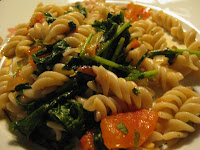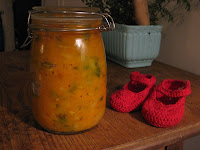Fast forward to 2010. Locallyproducedfood is a househol
 d string of words, already adopted by the mainstream as a corporate social responsibility halo (see marketing campaigns for Hellman's mayonnaise, Lay's potato chips and Loblaws supermarkets). Nearly every neighborhood in downtown Toronto has a weekly farmer's market. I think it's a step in the right direction, though I warn that Motive is as important as Action.
d string of words, already adopted by the mainstream as a corporate social responsibility halo (see marketing campaigns for Hellman's mayonnaise, Lay's potato chips and Loblaws supermarkets). Nearly every neighborhood in downtown Toronto has a weekly farmer's market. I think it's a step in the right direction, though I warn that Motive is as important as Action.But just when I thought I was the coolest local food kid on the block, I quickly discovered I still had a long way to go. So this year, I attended workshops on How To Start a Community Garden, and Mushroom Cultivation. My partner and I organized a CSA delivery group, tried to convince our community to set-up a garden at Joel Weeks park, flirted with guerrilla gardening and wild foraging, made and served veggie chili to hundreds of G20 protesters, and delved deeper into DIY craft through crochet, soaps and salves. We met dozens of people through Everdale, the G20 weekend, Plan B, Foodshare, Not Far From The Tree, and our daily travels, all of whom live and breathe activism, and continue to inspire and motivate my own life. And still, I feel this is only the beginning.
This year also brought about great strides in my balcony garden experiment, demonstrated by the appearance of fully grown, happy plants. I could not have done it without learning from Year One, proving that there is truth to those annoying "try, try again" quotes. The best advice I have coming out of Year Two is take care of your soil.
2011 will bring even more change. Starting in March, I'll be taking a year off to travel through Europe, Asia and Australia. It is with sadness that I announce that this blog will be on hold during that time. Though I'll no doubt be dying to share travel stories with you all, I can assure you it won't be through a travel blog or Facebook account. We'll figure something out.
Wishing you all a year of courage, change and action.
In solidarity,
Minda



















































